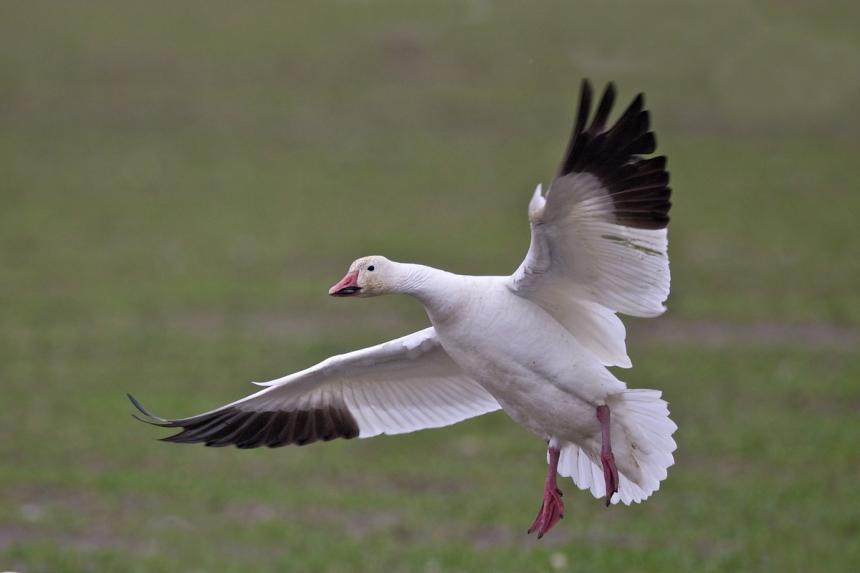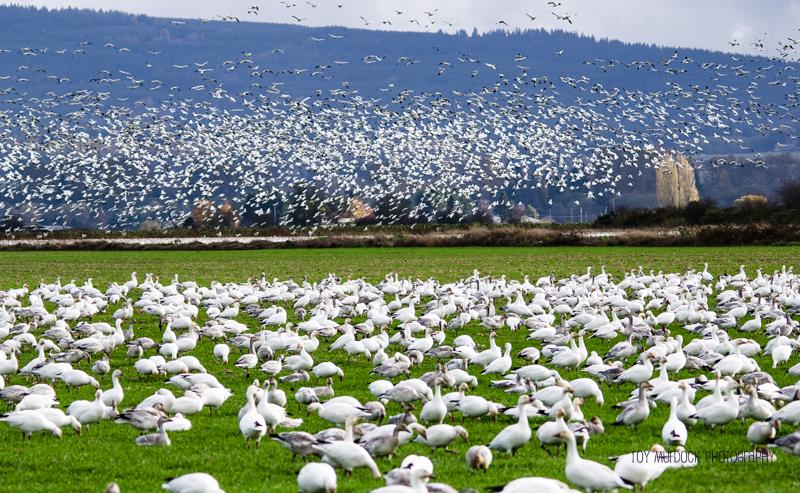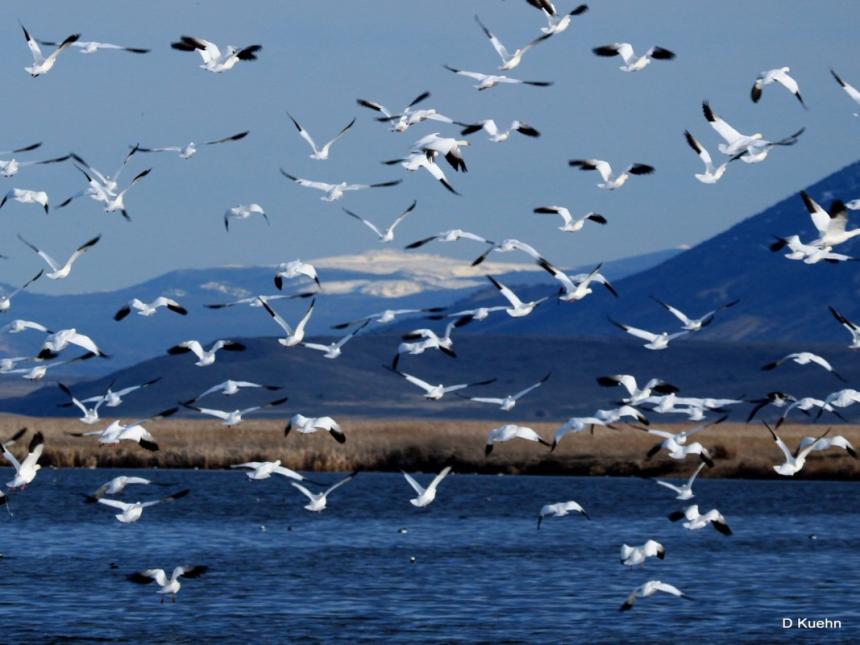Snow goose is managed as a migratory game bird under state and federal migratory waterfowl regulations cooperatively through the Pacific Flyway Council.
Description and Range
Physical description
Snow goose range from 29 to 31 inches in size and weigh between 6 1/2 to 7 1/2 pounds. There are two races of snow goose: greater snow goose occur along the Atlantic Coast, and lesser snow goose are found elsewhere on the continent. Blue geese are a color phase of the lesser snow. For information on how to identify snow goose species, check out the U.S. Fish and Wildlife waterfowl identification guide.
Geographic range
For a map of range-wide distribution and conservation status of the snow goose, check out NatureServe Explorer.
Regulations
Rules and seasons
For current rules about hunting snow goose in the state, be sure to check the Washington Game Bird and Small Game hunting regulations.
Conservation
Snow goose are game species, managed under state and federal migratory waterfowl regulations cooperatively through the Pacific Flyway Council. The Pacific Flyway Council is an administrative body that forges cooperation among public wildlife agencies for the purpose of protecting and conserving migratory birds in western North America. The Council is composed of the director or an appointee from the public wildlife agency in each state and province in the western United States, Canada, and Mexico.
WDFW has various game management plans to track populations and harvest of games species around the state, including waterfowl. These plans have information about harvest statistics from recent years, and the department's long-term vision and goals for a variety of species.
In early 2003, WDFW formed the Washington Waterfowl Advisory Group (WAG) to increase citizen involvement in the conservation and management of Washington’s waterfowl resources. This group has members from a broad representation of waterfowl hunters throughout the state. To learn about the WAG, contact the WDFW Waterfowl Section at (360) 902-2515 or visit the WAG webpage.
Resources
References
Hines, R.W. Ducks at a Distance: A waterfowl identification guide. Department of the Interior, U.S. Fish and Wildlife Service.



.jpg?crop=no&k=c&w=860&h=645)